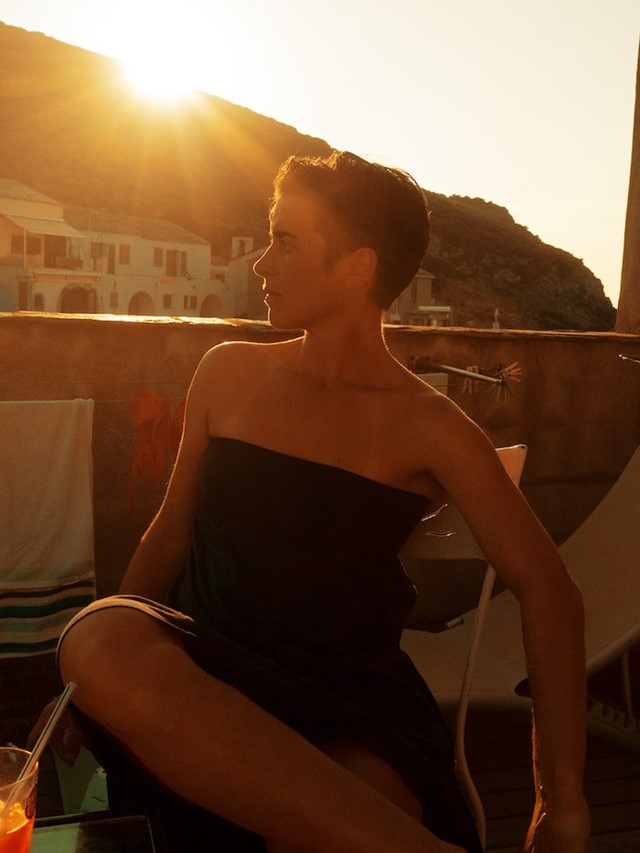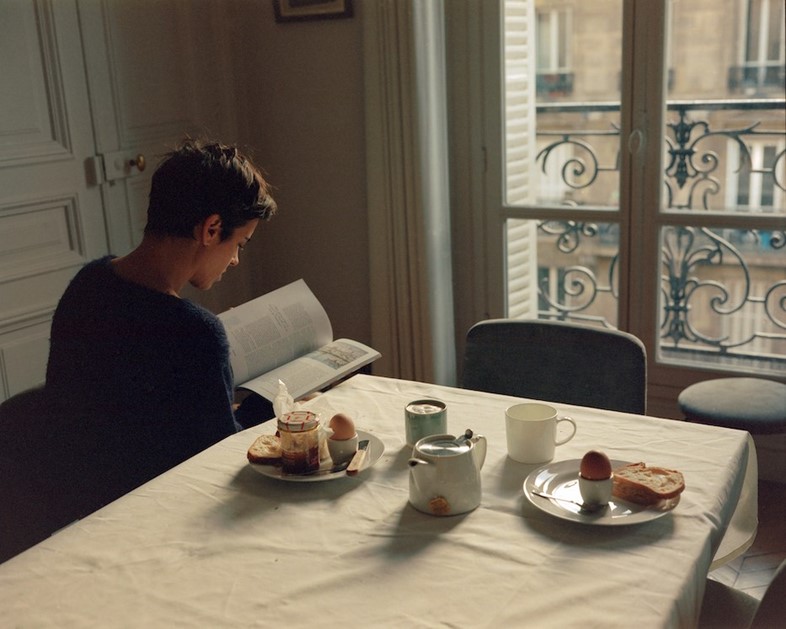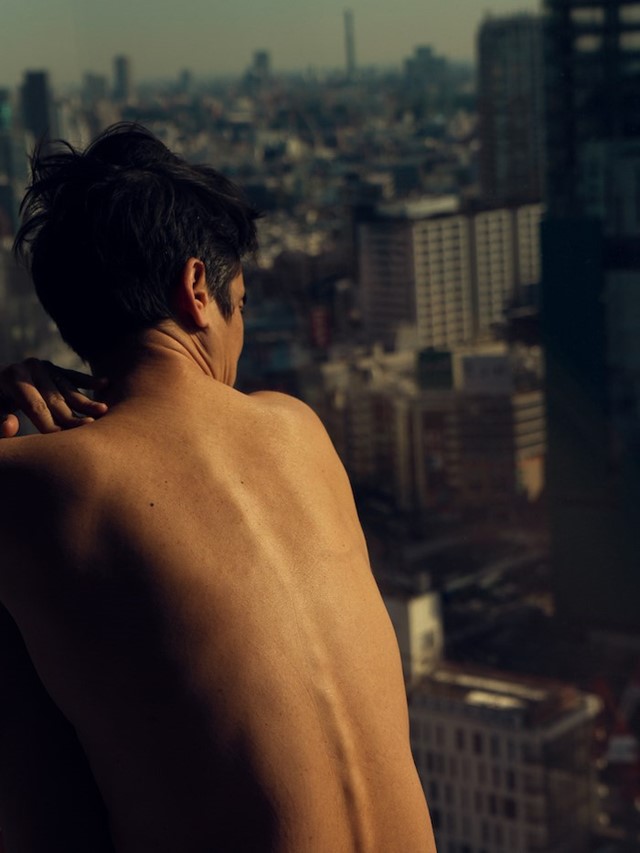The documentary photographer spent years reporting on war, but his latest monograph centres around his wife, Marion. Here, he talks about why he sees “no distance” between his work then and now
Christopher Anderson has taken time to reflect on his position as a documentary photographer. We speak via a Zoom call from his home in Paris, where he’s lived for three years with his French-born wife, Marion – who is the eponymous subject of his latest monograph – and their two children. He’s briefly distracted by a commotion outside the window: the cost of living crisis has led to widespread protests, walkouts and riots on his very doorstep. He tells me tear gas is being deployed on the streets as a conflict surges. His son, Atlas, who is in the room, walks towards the balcony to take a look. Anderson looks concerned. “Atlas, keep the door closed.”
Ordered to the world’s far corners on contract for Newsweek and National Geographic, the Canadian-born, Texas-raised photographer had spent years lensing conflict and national upset – instilled with a responsibility to capture people he doesn’t know and sometimes can’t relate to, to visually journal their bitter stories for the sake of reportage. “The only thing that I can offer my pictures is something about my experience.”
An assignment in 1999 for The New York Times Magazine proved especially pivotal both as a photographer “and as a human”, when Anderson, alongside writer Mike Finkel, boarded a 23-foot handmade wooden boat to document the 600-mile, ten-day immigration journey from Haiti to Florida. On board a boat named ’Believe in God’ with 44 asylum seekers fleeing strife, its Haitian escapees were entranced by ideas of new beginnings, seeking out the American Dream. A few days after departing, the boat started to sink. Instead of accepting his likely fate, Anderson was urged to continue taking pictures. The boat soon went down in the Caribbean, and its occupants were thankfully rescued by a US coast guard cutter. “That was the thing that crystallised this idea I had of what it was I wanted to do. I wanted this something … to make something that moves you. When you looked at the picture, you felt separated.”

The series, Desperate Passage, was published and later awarded the Robert Capa Gold Medal. Further series and monographs were released from the ground in Venezuela (Capitolio, 2006) and wars in Afghanistan and Iraq. Starting a family marked a turning point for Anderson, as he turned the lens towards his own life as opposed to the lives of strangers, though he didn’t give it up immediately. “[Capitolio] was already for me a demarcation point. It was sort of – in a weird way – my announcement of my break-up with journalism, because I realised what I was now doing,” says Anderson. “I went one time to Iraq after my son was born, and I recognised that I can’t function the same way. I don’t trust myself anymore, which means I’m putting other people at risk.”
“You still go out [to conflict zones] with this motivation of thinking that your responsibility to do this. So I felt somehow freed from that responsibility, and then replaced it with another responsibility, which was having a family to take care of.” But reconciling with being a responsible father, son and husband wasn’t the only draw away from war photography. Feeling a creative pull in other directions, Anderson’s first, intimate photo book Son arrived in 2013, which observed the birth and growth of Atlas (which unfolded as Anderson’s father was diagnosed with cancer); seeing the joy of birth, recognised the passing of time, and the seasonal nature of life. Then came Pia in 2021, which captured his daughter as a beacon of hope in the bleak times of the pandemic and Donald Trump. Marion marks the closing chapter in his familial trilogy.

Marion feels like an archive of memories (one of the earliest pictures of Marion featured in the book is from around the year 2000, taken soon after Anderson had met his soon-to-be wife), documenting in rich, warm colour the moments of comfort and domesticity. Trips to the sea, tender maternal moments and voyeuristic peeks into engrossed solitude – moments have been captured, printed and bound, to live as a record of love. “I’m not an intensely public person. I tend to be a little bit shy. So, yeah, it’s a little bit [funny] for me that I wound up doing these three books that could be seen as some serious oversharing,” he laughs. “There’s a certain irony in that and it’s not lost on me for sure.”
The departure from conflict photography to capturing his loved ones was organic in a number of ways. “I’ve produced bodies of work or books that on the surface seem totally disconnected with each other, and sometimes even play with different visual styles. People think that I was one kind of photographer, and I stopped being that photographer and became a different photographer,” Anderson says. “They’re all connected points on a spectrum. And you don’t have one without the other. So to me, when I look at the bodies of work, there is no distance between them.”

Considering the sinking boat in Haiti – the moment that could have been the end of his life – the photographer questioned himself. “Why make pictures that no one could see? The only answer I could come up with was; it has as much to do with me explaining the world to myself as it did explaining it to someone else.” It’s this sentiment that threads through Anderson’s work to date – it’s not only the emotional responses, which vary through the full spectrum, from tender comfort to melancholy – it’s the sensitive curiosity, a willingness to observe and to learn about the world. “We talk about this ‘fly on the wall photographer’ – I never wanted to do that. I want you to feel my presence in the pictures. I want you standing in my shoes.”
Marion by Christopher Anderson is published by Stanley/Barker and is out now.






